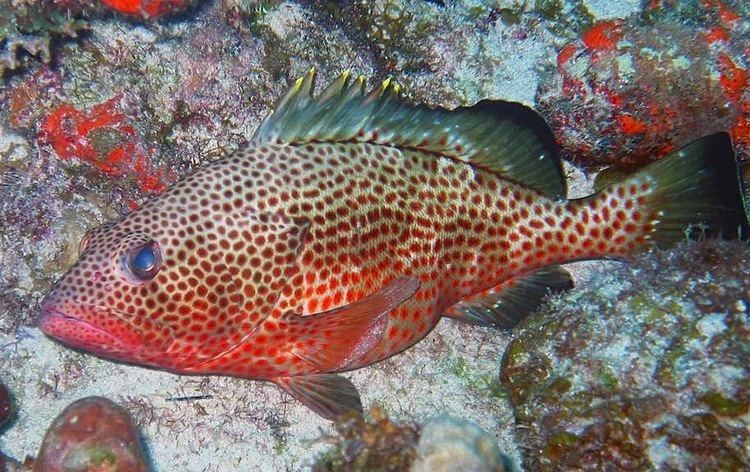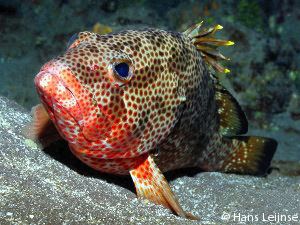Rank Species | Phylum Chordata | |
 | ||
Similar Rock hind, Graysby, Yellowfin grouper, Calico grouper, Mycteroperca interstitialis | ||
Red hind stalking in scotland
The red hind (Epinephelus guttatus), also known as the koon or lucky grouper in Caribbean vernacular, is a species of grouper in the family Serranidae native to the western Atlantic Ocean. Ranging from North Carolina, United States to Paraíba, Brazil, it is the most common species of Epinephelus in the Caribbean.
Contents

Description

Reddish brown spots spread over a whitish undercoat. Can reach over two feet in length, but on average is less than a foot. During spawning, females are easily distinguished from males. Females possess a pallid complexion and have swollen abdomens. The males appear dusky, mottled patterns with two or three dark bars above the anal fin and pale heads with dark areas on the sides of their lips.
Habitat
Females live on reefs of shallow to moderate depths, whereas larger males inhabit much deeper waters.
Diet

Mantis shrimps make up over 15 percent of their diet. Crabs are the most common item on their diet, and fishes like Bluehead Wrasse, Thalassoma bifasciatum; Boga, Inermia vittata; goatfishes and small morays are included.[3] Preferably, shrimps and octopuses.
Reproduction

Red Hind are protogynous hermaphrodites, changing from females to males during a stage in their life cycle. What triggers the change is unknown. In Puerto Rico, the fish gather in or near familiar spawning grounds along sections of the insular shelf during a one to two week period in association with the lunar cycles of January and February. In 1992, a tagged Red Hind traveled more than ten miles, crossing over water 600 feet deep, bypassing other aggregations, to spawn at a particular site.[3]

Not much is known about the species' early life stages. Though, on rare occasions, one to two inch juveniles are sighted sneaking about near cover on patch reefs in moderate depths.[3] They possess spaced red body spots on a bright-white background.
Most adults live for ten to eleven years.

